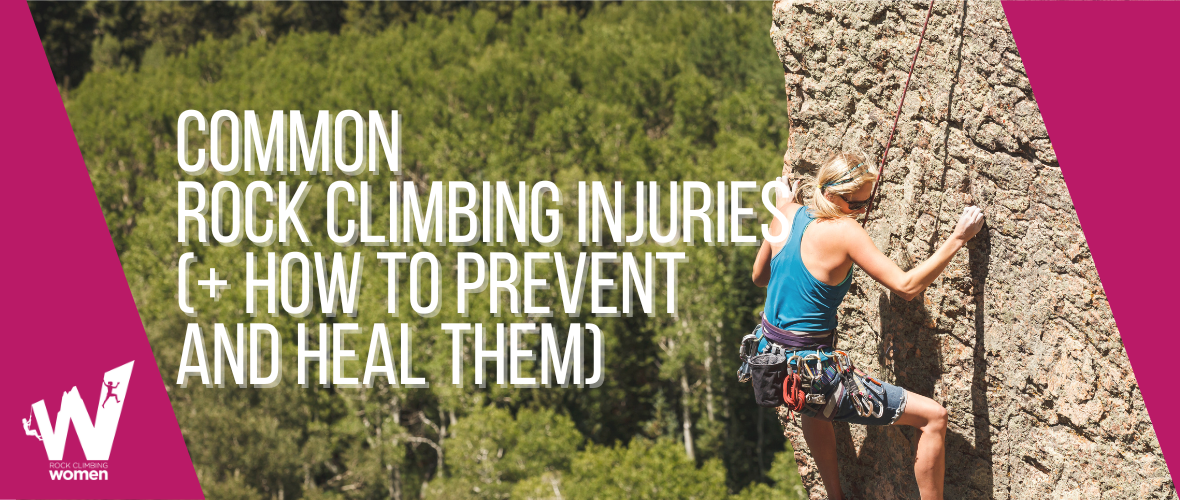Rock climbing is a physical and mental sport, full of mitigated risk and passion.
If you do your due diligence, the chances of a rock climbing-related injury are quite low.
For example, rushing to get on the wall without stretching is a huge no-no!
As you climb, your body shifts into whatever positions possible to get you up the wall.
Some of these positions are abnormal and out of the usual range of human flexibility.
Moving suddenly, falling awkwardly, and overexerting pumped-out ligaments are the leading factors in muscle strains for rock climbers.
Luckily, they’re usually avoidable if you catch the signs early.
#1. Triangular Fibrocartilage Complex (TFCC) Tears
This common climbing injury occurs when climbers experience an onset of wrist pain but continue climbing.
It causes the cartilage between the pinky finger and wrist carpals to strain or tear.
Symptoms: Sharp pain when curling pinky after a climb.
Treatment: Anti-inflammatory medication, injections, and/or splinting
#2. Rotator Cuff Tears
This painful shoulder injury is caused by overexerting weak scapular and shoulder muscles, thus causing a tendon tear.
The best way to avoid this injury completely is to build chest and shoulder strength outside the rock climbing gym.
If you improve your posture, you’ll be less likely to experience a rotator cuff tear.
Symptoms: Aching when you lift your arms and shoulders over your head. Weakness or numbness in the shoulder area. Occasional popping sounds when you activate this muscle region.
Treatment: Ice, rest, or — for severe cases — physical therapy.
#3. Tendonitis (Tennis Elbow or Pitcher’s Shoulder)
This is like Voldemort in the rock climbing game: we avoid speaking its name because it’s straight evil.
Tendonitis is an inflammation of a tendon, usually occurring in the elbows, forearms, and shoulders.
It builds up over time before it takes over completely.
Climbers hate this injury as it takes a long time to heal, and you never know for certain if you’re completely recovered.
If you’re unfortunate enough to get tendonitis, take your healing nice and slow
Symptoms: Tightness in the shoulders, elbows, or forearms.
Treatment: Ice, ice, baby! And lots of rest. Don’t even think about hopping on the bouldering wall until you’re in the clear.
#4. Finger Pulley Injuries
The most common climbing finger injury is an A2 pulley sprain on the ring finger, caused by overloading the tissue with too much weight or straining.
We use this finger often in complicated crimp holds, and when we miscalculate our weight distribution, it puts too much pressure on the A2 causing it to tear.
Symptoms: Popping sound when making hand hold movement. Pain, bruising, difficulty making a fist.
Treatment: Splinting, physical therapy, rest, ice, and more rest. Expert climbers tape their weak fingers for weeks following a pulley injury.
#5. Knee Tears (Medial Meniscus)
Throwing a high knee, drop knee, or heel hook are three ways you could damage your knee while climbing.
As these are all necessary climbing techniques, you can mitigate your risk of MMT by stretching thoroughly before climbing.
Another way to avoid knee tears is to practice falling the correct way in the bouldering gym.
Remember to never land on your feet. It’s a complete shock to all your joints; the crash pad is there to soften your fall on your bum. Use it.
Symptoms: Pain, swelling, or locking in the knee joint.
Treatment: If the tear is on the outermost area of the meniscus, it can heal on its own with ice, compression, elevation, and anti-inflammatory medication. The innermost region will require surgery.
#6. Blisters and Skin Tears
These kisses from the rock are the most common rock climbing injury out there.
No matter whether you climb for 20 minutes or 5 hours, they seem pretty much inevitable.
The worst thing you can do when you have a skin tear at the gym is to put on lotion.
You will only soften the skin, and slide off every route.
First, rinse the wound to pull out all remaining chalk and bacteria. Then, glue it shut with skin glue before covering the area with a Band-Aid and wrapping it with climbing tape.
Before you even see the signs of wear and tear on your feet and hands, tape them up.
How to Prevent Climbing Injuries
The best way to avoid injuring yourself while rock climbing is to listen to your body.
You wouldn’t run a marathon without stretching your legs first, would you?
Climbing is no different.
Warm up your muscles and get the blood pumping with at least 10–15 minutes of yoga, arm circles, finger flicks, etc.
Three engaging ways to activate your body before climbing are:
- Doing yoga with a friend.
- Traversing an easy route.
- Constantly improving your technique.
As fun as climbing is, every climber needs to take rest days.
Give your body a chance to recover, rest, and recharge before your next big project.
Want more valuable climbing tips, warmups, dream routes, and more? Sign up for our free weekly newsletter below to stay on belay!
DISCLAIMER: THIS WEBSITE DOES NOT PROVIDE MEDICAL ADVICE. The information, including but not limited to, text, graphics, images and other material contained on this website are for informational purposes only. No material on this site is intended to be a substitute for professional medical advice, diagnosis or treatment. Always seek the advice of your physician or other qualified health care provider with any questions you may have regarding a medical condition or treatment and before undertaking a new health care regimen, and never disregard professional medical advice or delay in seeking it because of something you have read on this website.
McKenzi Taylor founded Rock Climbing Women in 2013 after moving to a new city as a new climber seeking more climbing partners (and new friends!). Since her first taste of climbing in Spearfish Canyon, SD, McKenzi has been at the rock face seeking and sharing the thrill of climbing. She credits the support of a consistent climbing partner and community as the motivation to continue developing her skill, whether it’s trad, sport climbing or bouldering. A full-time business owner and mother, McKenzi’s on a mission to get her kids outside and learning to adventure alongside her.


